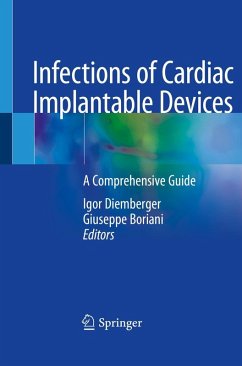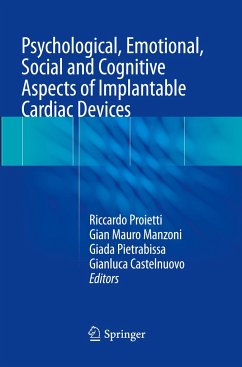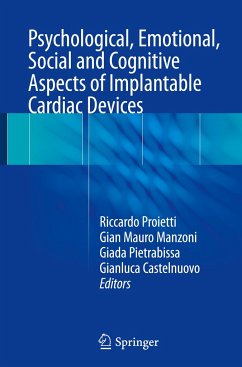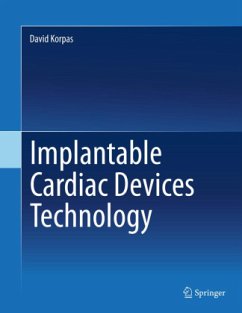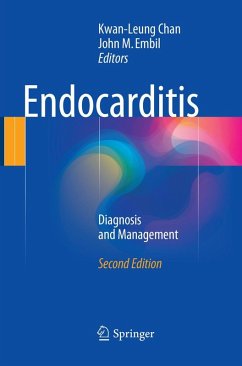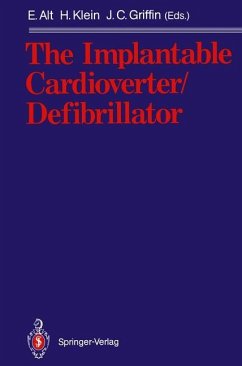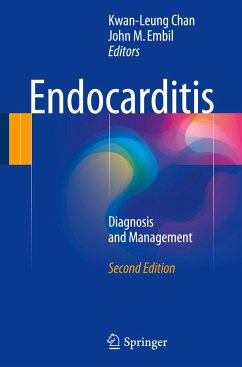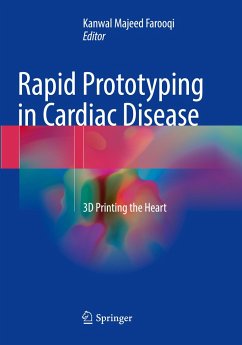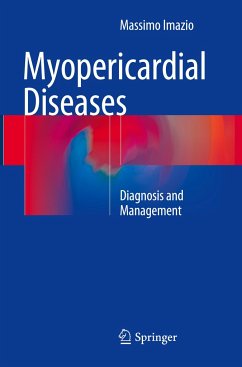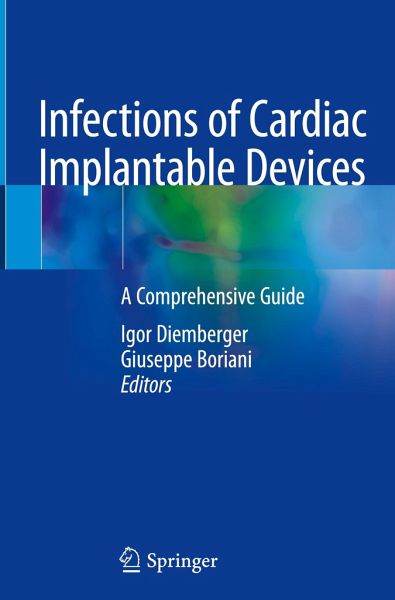
Infections of Cardiac Implantable Devices
A Comprehensive Guide
Herausgegeben: Diemberger, Igor; Boriani, Giuseppe

PAYBACK Punkte
53 °P sammeln!
Cardiac implantable device (CIED) infections are a key issue since they have serious consequences in terms of morbidity, mortality and associated costs for healthcare systems. Such infections are highly complex, which has implications for prevention (several factors underlie its development), diagnosis (requiring patient specific integration of several elements), acute treatment (choice of the antibiotic, lead extraction procedure), as well as long-term management (CIED re-implantation strategy and follow-up). Dealing with CIED infections requires appropriate organization of healthcare provisi...
Cardiac implantable device (CIED) infections are a key issue since they have serious consequences in terms of morbidity, mortality and associated costs for healthcare systems. Such infections are highly complex, which has implications for prevention (several factors underlie its development), diagnosis (requiring patient specific integration of several elements), acute treatment (choice of the antibiotic, lead extraction procedure), as well as long-term management (CIED re-implantation strategy and follow-up). Dealing with CIED infections requires appropriate organization of healthcare provision, with the creation of integrated hub-spoke referrals, and it has prompted many of the recent developments in CIED technologies: leadless pacemakers, subcutaneous defibrillators, antibacterial envelops and lead extraction devices. This book systematically examines all aspects of this multifaceted condition, discussing each clinical and organizational issue in a separate self-contained chapter. It starts by reviewing the epidemiology/pathophysiology of CIED infections, and then addresses acute and long-term management. Offering a comprehensive overview of the prevention of infections, considering both current and future perspectives, the book also provides practical suggestions along with recommendations from the literature in the field. This is the first book entirely focused on CIED infections. Written by an international team of leading experts it will appeal to broad audience, including cardiologists, electrophysiologists, infectious disease specialists, internists, healthcare professionals, health service managers and providers, researchers and those working in industries involved in the field.



